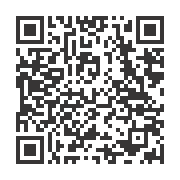

When your baby turns six months, it’s a good time to start thinking about teaching them to drink from a cup. Why now? It strengthens their mouth muscles for talking and develops their hand-to-mouth coordination skills. If you start this process too late—after eight months, you may find it harder for your baby to accept the cup.
There are many cup options on the market; here are a few things to think about before spending your money:

Baby’s first cup should be small so their little hands can hold it easily and raise it to their mouth.

Some parents choose a “sippy” cup to cut down on drips and spills. That’s fine, but remove the ‘no spill gadget’ or ‘stopper’ from the spout so liquids can flow freely—this will help your baby learn the skills needed to drink from an open cup and limit their frustration.

A straw cup is another good option. It helps strengthen the muscles in your baby’s mouth that make sounds, words and speech patterns.

Eventually, you will want to offer an open-top cup too.
Between 10 to 12 months, your baby will start to master the cup. This is the time to provide the cup at mealtime and snack instead of the bottle. By the time your baby is 12 to 15 months, they should be drinking all fluids from a cup. Bye-bye bottle!
You can start offering human milk, formula or water in the cup. Start out with one inch of liquid in the cup so if there are spills, it won’t be too messy. You can always refill the cup if your baby wants more. In the beginning, expect that your baby will spill or dribble some liquid from their mouth, but don’t worry, this is normal. Use a bib to keep their clothes clean.
If your baby isn’t interested in drinking from the cup, don’t force it. Let them smell and see what’s in the cup. Dip your (clean) finger in the drink and let them taste it. Always go slowly and help them take a sip by holding the cup and tilting it up to their mouth.
At first, you’ll want to offer the cup at meal times. Sit your baby upright, preferably strapped in a high chair. After you feed your baby a few bites of food, offer a sip or two from the cup. You can alternate spoon-feeding and sips of liquid from the cup throughout the meal. Once your baby gets the hang of drinking from a cup, use the cup at all meals and snacks.
Teaching your baby how to drink from a cup is a milestone in the first year of life. Get started on time and enjoy watching your baby learn an important new skill! ![]()
Install this web app on your iPhone: tap ![]() and then Add to Home Screen.
and then Add to Home Screen.
Side-Lying Hold
This hold is useful when:
Cross-Cradle Hold
This hold is useful when:
Clutch or “Football” Hold
This hold is useful when:
Cradle Hold
This hold is useful when:
Laid-Back Hold
This hold is useful when: